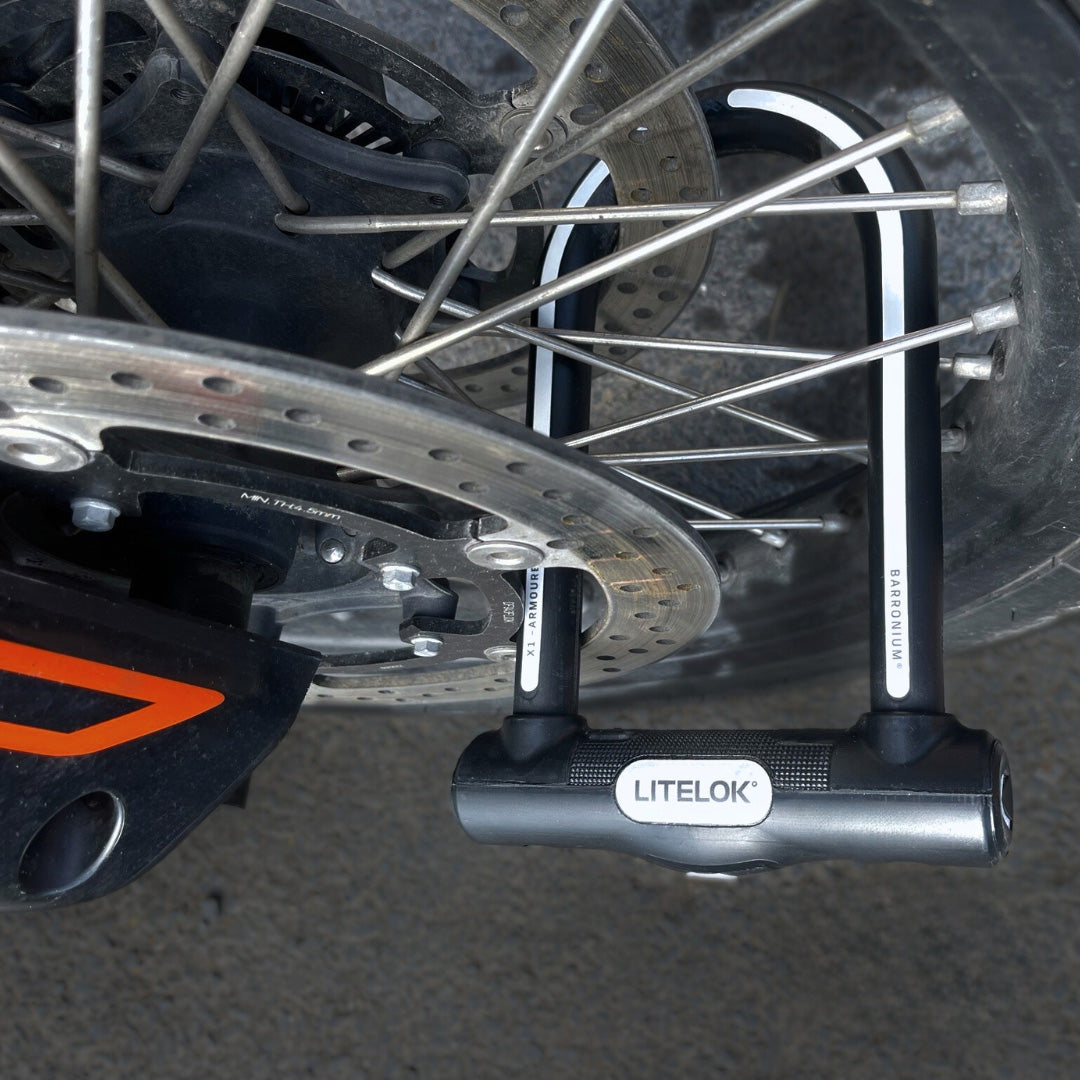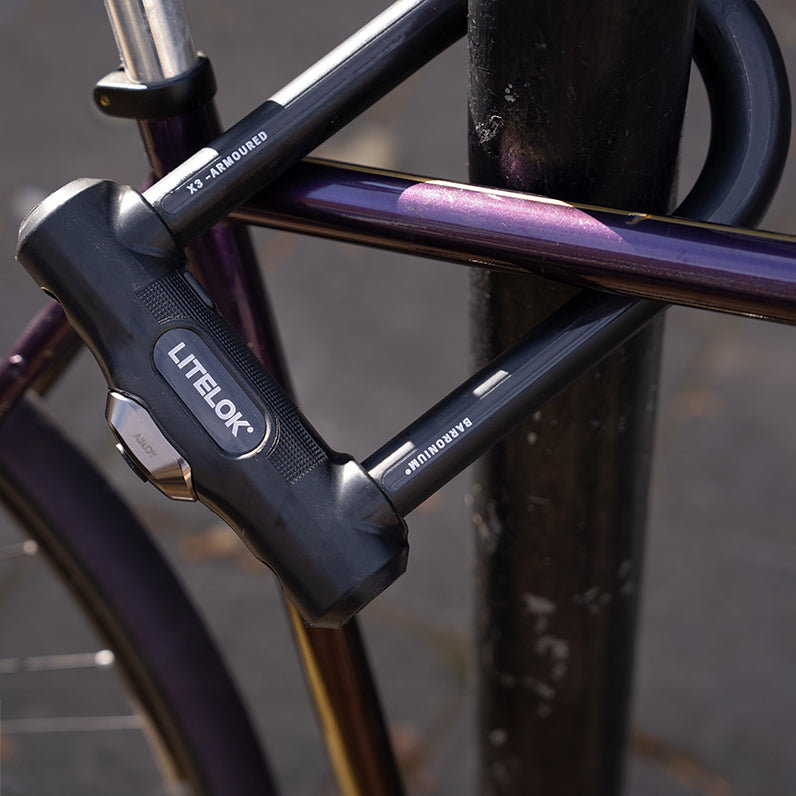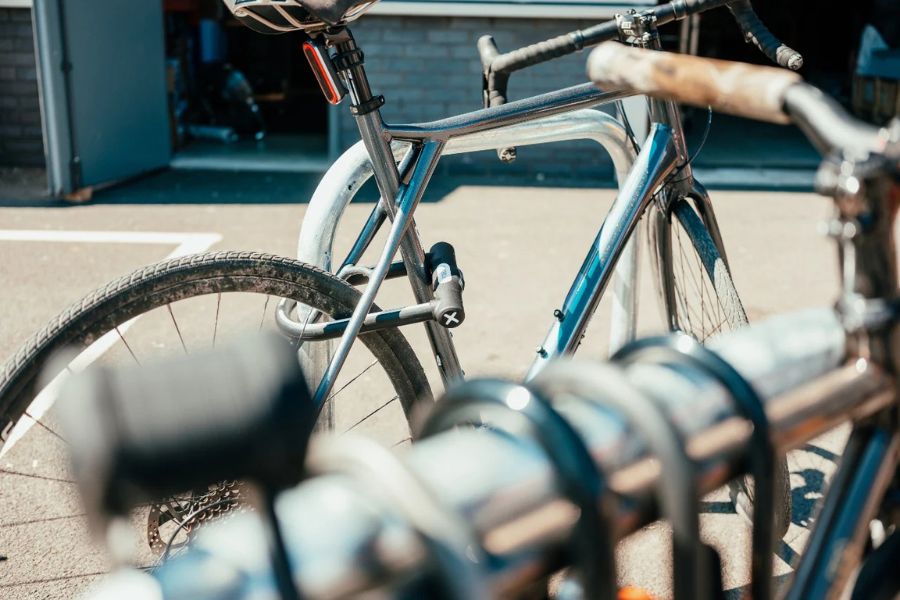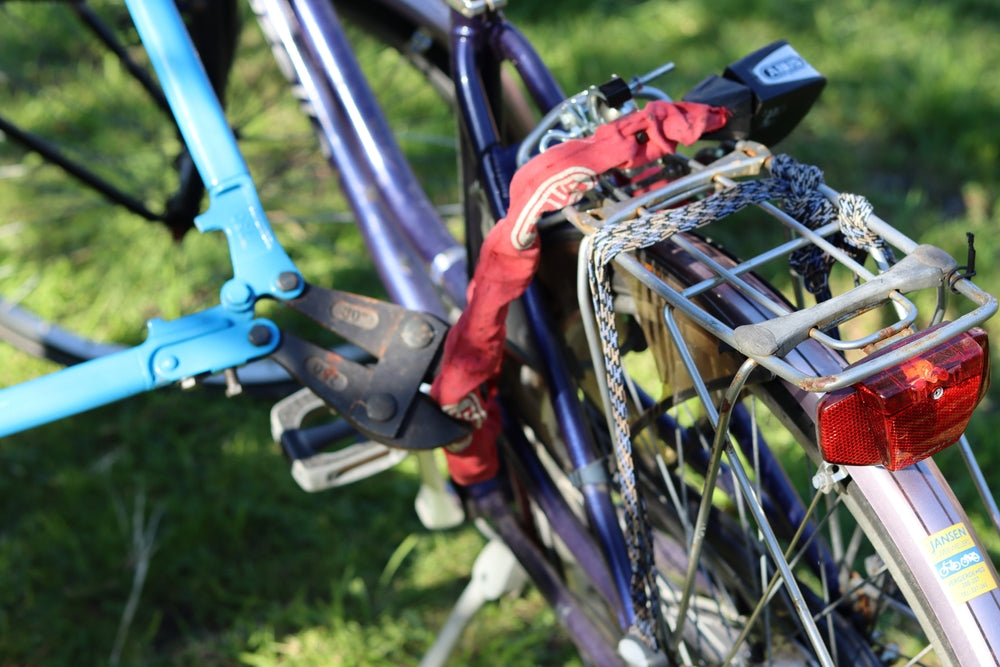We're often asked about our Barronium® technology and its development. First introduced as part of our LITELOK X range, Barronium® was designed to give resistance against one of the most effective tools being used by bike thieves - angle grinders.
With very little available from even the leading brands, locks with armoured technology capable of resisting angle grinders is extremely limited. Most locks on the market can be cut in a matter of seconds. To give you insight into the concept, development and application of Barronium, LITELOK founder (and Barronium® inventor), Neil Barron answers some of our most commonly asked questions.
What is Barronium?
Barronium® is a material technology which we’ve developed specifically to enhance the power tool resistance, specifically angle grinders.

We describe Barronium® as Fused Composite Armour and I think that’s a good starting point. Composite materials are made up of multiple materials held together. Barronium® is expensive to make and apply so we are quite secretive about how it is all done.
How was Barronium® developed?
Barronium® was developed over a period of five years in association with Swansea University School of Engineering and their metallurgy labs and with UK and Welsh Government support. We set out to make the most power tool (angle grinder) resistant material that we could, within current manufacturing capabilities and with the aim of bringing aerospace level of technology to consumer products.

We tried thousands of different combinations of materials and ways to apply them as well as structural formats. We created lots of lab samples which could be mechanically tested by ourselves and the University and other agencies and once we were close, we started to scale up into full size products before launch LITELOK X in the UK in September 2022.
Why not use a material that already existed?
Existing security solutions rely on using hardened steels such as Boron steels used for padlocks and chains. The objective is generally to balance the ductility of the steel, i.e. the ability of it to withstand impact and brute force attack, with its hardness to resist the abrasive action of cutting with saws and grinders.
So far, most manufacturers have shied away from expensive composites because of the cost and complexity in getting them to work for consumer products. So in short, we had to create our own technology because, aside from a few materials with limited manufacturability, there weren’t any readily available to us.

"Since I’ve been working on locks, battery angle grinders have gone from expensive tools which weren’t very good at cutting, to powerful and affordable tools that can cut most materials and can be bought relatively inexpensively even from supermarkets. Thieves are now angle grinding in broad daylight which is scary. They generally want to be away in 30 seconds which is a problem for the current best-selling locks as they only last that long at best. Where everyone sees problems, I see opportunities." - Neil Barron
How does Barronium® work?
I’ve been trying to think of great ways to explain this to people as the super scientific ones aren’t always that accessible, plus we have some engineering magic which is kind of secret.
Composite materials are made up of multiple materials held together. Angle grinding involves extreme abrasion which is related to things like sawing and filing but using electric motors and fairly sophisticated discs containing the hard materials. The hard materials gouge away at the steel to make the cut. To disrupt this and slow it down you need even harder materials of the right size, and in the right location. The hardest materials are ceramics and the hardest material currently known is diamond. We use very hard materials which are in a particular recipe and fused to (i.e. can’t be separated from) the hardened steel of the lock which then defends against all of the other tools I mentioned.
Ceramics and even diamond are very hard but not very resistant to impact and bending etc so you need other materials to hold them in place and make it all work. Think of a knife and fork and a plate. The knife and fork generally don’t scratch the plate as that would be horrible for food hygiene so you know that the plate is much harder than the cutlery, but if you drop the plate, you know it will smash. So, all in all you have a system which works for cutting your food. We’re effectively putting the cutlery and the plate in your lock. That’s my best attempt at an analogy which I know is a bit bizarre but I do hope it works for some people!







Leave a comment
This site is protected by hCaptcha and the hCaptcha Privacy Policy and Terms of Service apply.